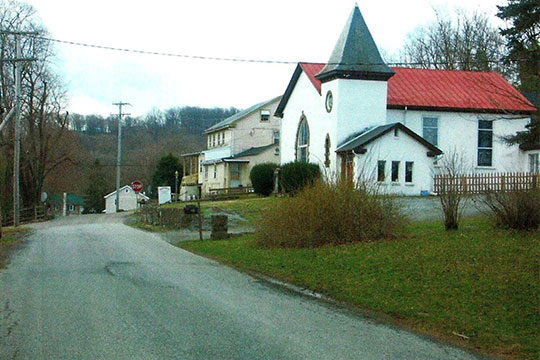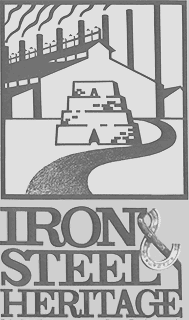
East Nantmeal, Chester County, Pennsylvania, began when Welsh Quakers settled in Nantmeal, or Nantmel, as first noted on County tax lists in 1717. Named after a village in Radnorshire, Wales, Nantmeal was split into East Nantmeal and West Nantmeal in 1742, with East Nantmeal retaining what is currently Warwick Township until 1842. Because of its proximity to the French Creek watershed and to vast amounts of hardwood timber, lime and iron ore deposits, East Nantmeal became an important site for the iron industry in the colonies, and was the only agricultural community to support the iron industry before 1830.
For a trip through the 18th and 19th centuries as it was at the time of the cold blast furnaces, start at the crossroads of Fairview and Nantmeal for a tour of Nantmeal Village, recently listed on the National Register. Then drive the township’s scenic roads west to the newly formed Warwick Furnace Preserve on Valley and Warwick Furnace Roads. The site of the large “tilt hammer” forge (Morris Tilt) is along Route 100. The Cupola Furnace district is slightly east, and the Reading Furnace/Thomas Bull house of William Branson slightly west, of Warwick Furnace.
Warwick Furnace Farms
The manor house at Warwick Furnace was built in 1738, the building of the Furnace having been set into operation by Samuel Nutt just prior to his death in 1737. (See Warwick Furnace Farms site page.)
Reading Furnace Historic District
The Reading Furnace Historic District began as an iron furnace in 1736.
Within ten years its master, William Branson, had constructed a house, separate kitchen,
springhouse, smokehouse and wash house on the property. Eventually he expanded his
operation to 600 acres, adding a farm for raising food for his workers. After Branson’s
death in 1760 Reading Furnace passed through several owners until 1786, when the furnace
was taken down and a forge was built in its place. Branson’s grandson, Samuel
Van Leer, ran the forge until 1811, when the Van Leer family, which also owned Hibernia
Furnace and Springton Forge, abandoned iron making in Chester County for the more
lucrative iron business being established in Alabama, Tennessee,and Kentucky.
Thomas Bull House
This historic home, located just east of
Elverson, was bought in 1783 by Thomas Bull, the manager of the Warwick Furnace. Originally
built in 1715 and owned by Owen Roberts, the property was sold in 1729 to William
Branson as part of the Redding Plantation, who eventually sold it to Bull. Bull enlarged
the house in 1785, adding the western section. The last Bull descendant left the house
in 1942.






